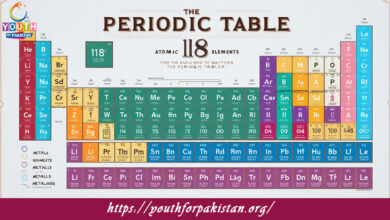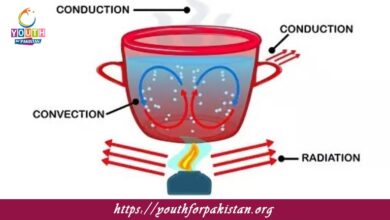Ohm’s Law MDCAT MCQs with Answers

Welcome to the Ohm’s Law MDCAT MCQs with Answers. In this post, we have shared Ohm’s Law Multiple Choice Questions and Answers for PMC MDCAT 2024. Each question in MDCAT Physics offers a chance to enhance your knowledge regarding Ohm’s Law MCQs in this MDCAT Online Test.
Ohm’s Law MDCAT MCQs Test Preparations
Ohm’s Law states that the current through a conductor between two points is directly proportional to the:
a) Voltage across the conductor
b) Resistance of the conductor
c) Temperature of the conductor
d) Length of the conductor
According to Ohm’s Law, the formula to calculate current (I) is:
a) I = V/R
b) I = VR
c) I = R/V
d) I = V^2/R
In Ohm’s Law, what does the symbol ‘V’ represent?
a) Voltage
b) Current
c) Resistance
d) Power
The unit of resistance in Ohm’s Law is:
a) Ohm (Ω)
b) Volt (V)
c) Ampere (A)
d) Watt (W)
If the resistance in a circuit is doubled and the voltage remains constant, the current will:
a) Be halved
b) Be doubled
c) Remain the same
d) Be quartered
Ohm’s Law is represented by which equation?
a) V = IR
b) P = VI
c) F = ma
d) E = mc^2
A resistor has a resistance of 5Ω. If a current of 2A flows through it, the voltage across the resistor is:
a) 10V
b) 2.5V
c) 5V
d) 1V
In a series circuit, the total resistance is equal to:
a) The sum of the individual resistances
b) The product of the individual resistances
c) The inverse of the sum of the individual resistances
d) Zero
If the voltage across a resistor is tripled, the current through the resistor will:
a) Triple
b) Remain the same
c) Double
d) Be halved
In a parallel circuit, the total resistance is:
a) Less than the smallest resistance
b) Equal to the largest resistance
c) The sum of all resistances
d) Greater than the largest resistance
The graph of V versus I for an ohmic conductor is:
a) A straight line passing through the origin
b) A curve passing through the origin
c) A straight line with a negative slope
d) A horizontal line
For a fixed voltage, if the resistance decreases, the current will:
a) Increase
b) Decrease
c) Remain constant
d) Be zero
In Ohm’s Law, the term ‘R’ stands for:
a) Resistance
b) Reactance
c) Resilience
d) Resonance
If a resistor with a resistance of 10Ω has a voltage of 50V across it, the current flowing through the resistor is:
a) 5A
b) 0.5A
c) 10A
d) 2A
Ohm’s Law is valid only for:
a) Ohmic conductors
b) Non-ohmic conductors
c) Semiconductors
d) Superconductors
The resistance of a conductor is directly proportional to its:
a) Length
b) Cross-sectional area
c) Temperature
d) Conductivity
What happens to the current if the voltage across a resistor is doubled?
a) It doubles
b) It halves
c) It remains the same
d) It becomes zero
If a wire’s resistance is 8Ω and the voltage across it is 24V, the current through the wire is:
a) 3A
b) 2A
c) 4A
d) 6A
In a conductor, as temperature increases, the resistance typically:
a) Increases
b) Decreases
c) Remains constant
d) Becomes zero
The SI unit of current is:
a) Ampere
b) Volt
c) Ohm
d) Watt
Which of the following materials typically obeys Ohm’s Law?
a) Copper
b) Germanium
c) Silicon
d) Rubber
In a circuit with constant resistance, an increase in current indicates:
a) An increase in voltage
b) A decrease in voltage
c) A constant voltage
d) A decrease in power
Ohm’s Law can be used to determine the:
a) Relationship between current, voltage, and resistance
b) Power output of a circuit
c) Energy consumption
d) Frequency of an AC circuit
The potential difference across a 20Ω resistor carrying a current of 3A is:
a) 60V
b) 6V
c) 30V
d) 40V
If the voltage across a conductor is kept constant and the resistance increases, the current will:
a) Decrease
b) Increase
c) Remain the same
d) Be zero
A conductor with a resistance of 12Ω and a current of 4A will have what voltage across it?
a) 48V
b) 3V
c) 16V
d) 4V
In a circuit, the power dissipated by a resistor can be calculated using:
a) P = VI
b) P = I^2R
c) P = V^2/R
d) All of the above
The relationship between power (P), voltage (V), and current (I) is given by:
a) P = VI
b) P = V/I
c) P = I/V
d) P = V^2I
The resistance of a wire depends on its:
a) Length, cross-sectional area, and material
b) Length only
c) Cross-sectional area only
d) Material only
In a metallic conductor, the charge carriers are typically:
a) Electrons
b) Protons
c) Neutrons
d) Ions
The voltage drop across a resistor is determined by the product of:
a) Current and resistance
b) Current and power
c) Resistance and power
d) Power and time
In a series circuit with resistors, the total voltage is equal to:
a) The sum of the voltage drops across each resistor
b) The product of the voltage drops across each resistor
c) The inverse of the voltage drops across each resistor
d) Zero
In a parallel circuit, the total current is equal to:
a) The sum of the currents through each path
b) The product of the currents through each path
c) The inverse of the sum of the currents through each path
d) Zero
Ohm’s Law is not applicable in circuits with:
a) Non-linear components
b) Linear components
c) Constant voltage
d) Constant current
A circuit consists of a 9V battery and a 3Ω resistor. The current in the circuit is:
a) 3A
b) 27A
c) 1A
d) 9A
The conductance of a material is:
a) The reciprocal of resistance
b) The reciprocal of current
c) The reciprocal of voltage
d) The reciprocal of power
In a resistor, when the temperature increases, the resistance:
a) Increases
b) Decreases
c) Remains the same
d) Becomes zero
A conductor obeying Ohm’s Law is known as an:
a) Ohmic conductor
b) Non-ohmic conductor
c) Insulator
d) Semiconductor
If the resistance in a circuit is 20Ω and the current is 2A, the power dissipated is:
a) 80W
b) 40W
c) 10W
d) 60W
In a circuit, if the voltage is zero, the current through the circuit is:
a) Zero
b) Infinite
c) Maximum
d) Depends on the resistance
If you are interested to enhance your knowledge regarding Physics, Chemistry, Computer, and Biology please click on the link of each category, you will be redirected to dedicated website for each category.





